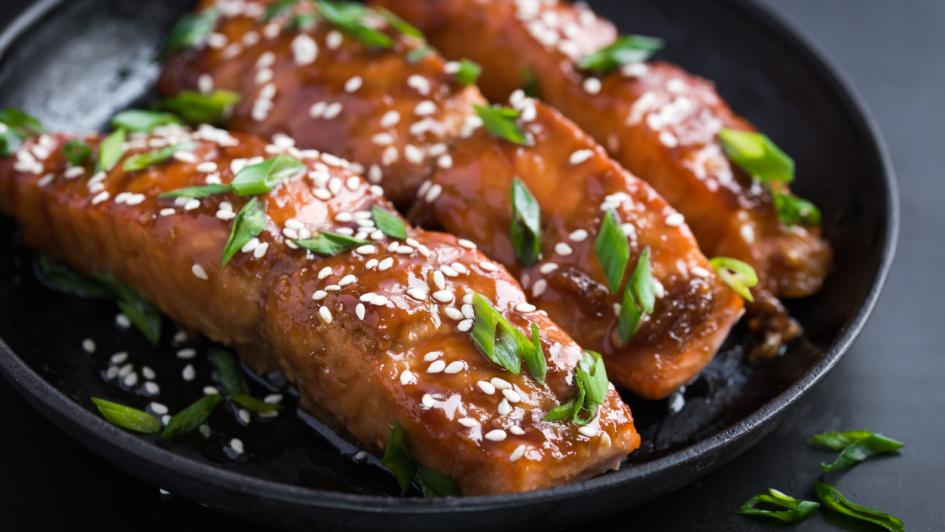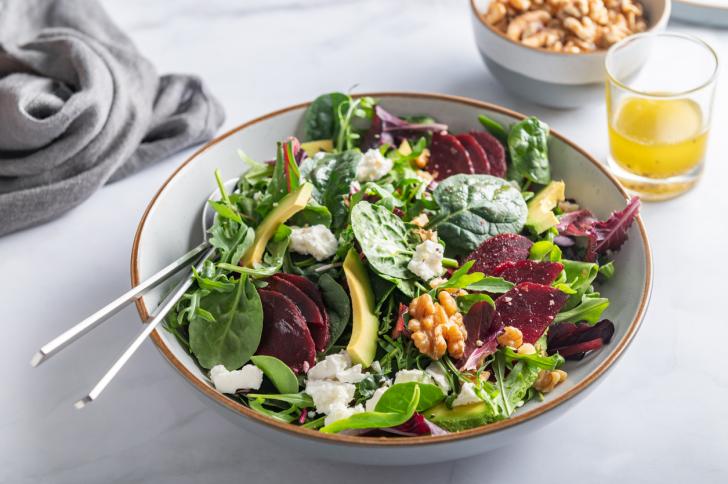Teriyaki Salmon

Published
This teriyaki salmon bowl will satisfy anyone in your household, especially if you are short on time. It’s as easy as roasting whatever vegetables you have on hand while preparing a quick and easy sauce. The best part is that this teriyaki salmon bowl contains omega-3 fatty acids!
Omega-3 fatty acids are essential fats that the body cannot produce on its own and must be obtained from food. They provide a wide range of health benefits, including reducing the risk of heart disease and stroke, assisting in managing conditions such as lupus, eczema, and rheumatoid arthritis, and potentially offering protective effects against cancer and other diseases.
A simple way to increase your omega-3 fatty acid intake is by consuming more fatty fish such as salmon. For this recipe, you can use either fresh or canned salmon. When selecting canned salmon, opt for varieties that are wild-caught and ensure that the ingredients list only salmon and possibly salt. Additionally, choose brands that responsibly source their fish and openly share information about their practices. Lastly, verify that the company tests for mercury levels, which should be well below the FDA limit.
Ingredients
Roasted Vegetables
- 4 cups of salad mix
- 2 salmon filets or 1 can salmon.
- 1 head broccoli florets with or without stems, chopped.
- 1 medium sweet potato, cut into small cubes, about 1in or less.
- 1 tbsp extra virgin olive oil
- 1 tsp sea salt
Sauce
- 1/4 cup coconut aminos
- 1/4 cup water
- 2 tsp apple cider vinegar
- 2 tsp – ½ tbsp arrowroot powder use less or more depending on how thick you like it.
- 1 tbsp toasted sesame oil
- 2 tsp maple syrup
Optional Toppings
- 1/4 cup scallions, green tops chopped.
- 1 tbsp sesame seeds
- ½ cup shelled edamame
- 1 small avocado cut in half and sliced.
Instructions for Salmon Filets
- Start by making the sauce, which can be done ahead of time, by combining all sauce ingredients in a small saucepan. Heat on medium heat, stirring occasionally, until the sauce is reduced to desired consistency. If it gets too thick, you can incorporate a bit of water to thin it out.
- Let the sauce cool.
- Place the salmon filets in a shallow bowl coat them with salmon and set aside.
- Preheat oven to 400 F.
- Prepare a large sheet pan with parchment paper or leave bare if preferred.
- Chop vegetables and place them onto a sheet pan. Lightly massage olive oil onto vegetables and top with sea salt.
- Place in oven and set timer for 15 minutes.
- After 15 minutes stir or give your vegetables a shake on the pan and nestle the salmon filets onto the sheet pan with the vegetables and cook for another 10-15 minutes until the internal temperature of the salmon reaches 140 degrees.
- Serve immediately with spring mix vegetables and optional toppings.
Instructions for Canned Salmon
- Preheat oven to 400 F.
- Prepare a large sheet pan with parchment paper or leave bare if preferred.
- Chop vegetables and place them onto a sheet pan. Lightly massage olive oil onto vegetables and top with sea salt.
- Roast for 30 minutes or until the potatoes or fork-tender.
- While the vegetables are roasting, make the sauce by combining all sauce ingredients in a small saucepan. Heat on medium heat, stirring occasionally, until the sauce is reduced to desired consistency. If it gets too thick, you can incorporate a little bit of water to thin it out.
- Once the vegetables are done, place half of them on top of 2 packed cups of spring mix. Then follow with a half can of salmon, the preferred sauce amount, and any optional toppings.
About the Author
Robin Holliday is a Dietetic Intern at Bastyr University in Kenmore, WA. She is passionate about functional nutrition and its profound impact on optimizing health. When she is not studying, she enjoys spending time outdoors walking in nature or meal-prepping IBS-friendly meals throughout the week.


